Introduction
Ontario is a leader in clean, green growth in Canada and around the world. Since 2018, the government has taken significant steps to protect our land, air and water, lower greenhouse gas emissions, and ensure a safe, healthy, and clean environment now and for future generations.
Read on to learn more about our progress and our next steps to ensure a green, prosperous Ontario for future generations.
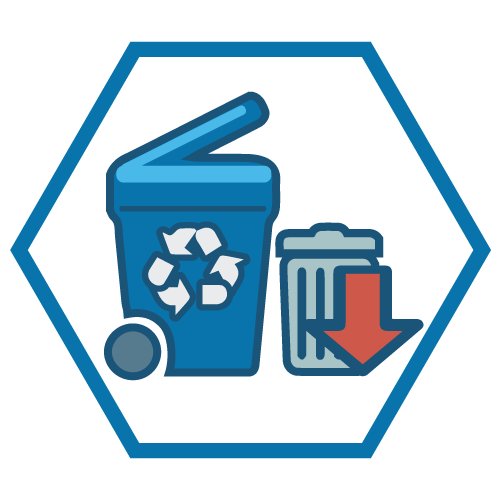 Reducing the amount of waste that goes to landfill
Reducing the amount of waste that goes to landfill
Ontario is keeping our neighbourhoods, parks, and waterways clean and free of litter and waste by:
- reducing and diverting waste from landfills
- exploring opportunities to recover valuable resources by harnessing the innovation and ingenuity of industry
- finding new purposes for packaging and products that reintegrates back into the economy
Progress since 2018
We made the following progress on the transition to the producer responsibility model:
- Finalized a new regulation that will modernize and enhance our Blue Box program by making producers of products and packaging fully responsible for managing the life-cycle of their products. The new changes will expand blue box service to more communities and public spaces, standardize the list of materials that can be recycled across the province and save municipalities money.
- Finalized new regulations that will require producers to collect and safely manage the full life-cycle of their electrical and electronic equipment, such as cell phones, computers, printers and gaming equipment and all types of primary and rechargeable batteries that are five kilograms or less.
- Began consulting on hazardous waste regulations that would transition Hazardous Waste program reporting to the Resource Productivity and Recovery Authority’s digital service and make reporting easier and faster for the regulated community, while providing more timely, accurate information to the ministry.
- Launched a working group and released proposed amendments to the food and organic waste policy statement to clarify and expand the types of materials that should be collected by municipalities in green bins and encourage innovation in the processing of compostable products.
- Provided over a $5 million investment through the Surplus Food Redistribution Infrastructure program to help food rescue organizations divert high quality food to those who need it and out of landfill.
- Enacted legislation to establish the second Tuesday of May each year as Ontario’s Provincial Day of Action on Litter.
- Continued to work with other provinces, territories, and the federal government on the development of an action plan to implement a Canada-wide plastics strategy, including single-use plastic waste.
- Raised awareness about the impacts of waste in our neighbourhoods, waterways and green spaces and encourage participation in safe cleanups during Waste Reduction Week with members of your household.
- Provided municipalities with greater say in the siting of landfills in or near their communities.
Next steps
- Update the Strategy for a Waste-Free Ontario to reflect the province’s roadmap to reduce and divert waste over the next 10 years.
- Continue the consultations and eventual finalization of the blue box, hazardous waste and special waste regulations as part of the transition to the producer responsibility model.
- Consult on the Industrial, Commercial and Institutional waste reform framework to improve the current waste diversion activities within this sector.
- Work with the federal government to develop a path forward for compostable packaging, including looking at standards and supporting pilot testing of processing, so that emerging and innovative products and packaging can be managed appropriately in Ontario’s existing processing facilities.
- Consult on a proposal to phase out food and organic waste from landfills by 2030 that will focus on building processing capacity in the province.
- Provide guidance to educate the public and key stakeholders about reducing and diverting food and organic waste.
- Develop and seek input on proposed changes to better define the environmental assessment process for advanced recycling facilities as a method for recovering value from waste and keeping valuable resources out of landfills.
- Work with partners to conduct audits to identify materials that could be recovered and recycled rather than sent to landfills. Audits would help identify new materials that could be designated under producer responsibility in an effort to recover high-volume resource streams to increase diversion and phase out these items from being sent to the landfill.
- Explore opportunities to better manage landfills, such as working with industry to better understand any issues, promote best practices to support better management and operation of landfills and improve opportunities for landfill gas capture.
- Cut regulatory red tape and modernize environmental approvals to support sustainable end markets for waste and new waste processing infrastructure, including support for emerging and innovative technologies, such as mixed waste processing.
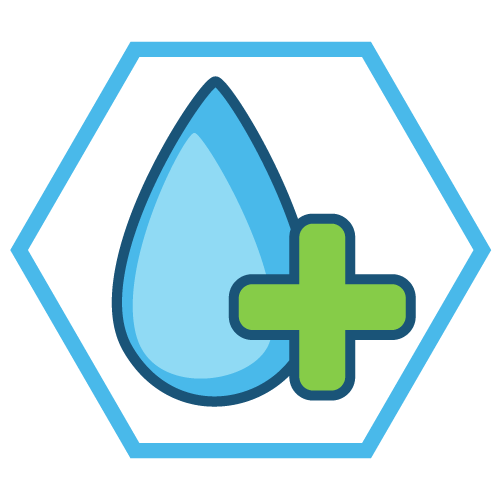 Keeping our water safe and clean
Keeping our water safe and clean
We are working hard to ensure our drinking water is safe to drink and that our lakes and waterways are protected.
This work is done in collaboration with many partners such as conservation authorities, Indigenous communities and various levels of government so we can take the most effective action to improve the health of these vital ecosystems.
Progress since 2018
- Advanced how water quantity is managed in Ontario to ensure water resources are protected and used sustainably, now and in the future:
- Completed an extensive review of the province’s water taking policies, programs and science tools.
- Validated the ministry’s findings on water bottling through an independent third-party panel from Professional Geoscientists Ontario which confirmed that:
- water takings for bottling are managed sustainably in Ontario under the existing legislation, regulation and guidance
- bottled water takings are not impacting the sustainability of groundwater resourcesretained
- Finalized enhancements to Ontario’s water taking program after many years of public engagement. The new rules, which came into effect April 1, 2021, apply to all permitted water users, including water bottlers, and:
- give municipalities more say on whether water bottling companies can use groundwater in their areas. Even with support from the host municipality, companies will still be required to apply to the ministry for a permit to take water and meet any requirements or conditions if the ministry issues a permit
- establish how water should be shared among water users when there are competing demands for water
- put in place a new, more adaptive approach for the ministry and water users to better assess and manage multiple water takings together in areas of the province where water sustainability is a concern
- make water taking data available to the public to increase transparency in how Ontario manages water resources
- To support the new changes, the province also provided new guidance on managing water taking in areas where water sustainability is a concern and where there are competing demands for water.
- Proposed updates to technical rules for source protection plans to assess risks under the Clean Water Act and to protect the quality of Ontario’s drinking water sources.
- Invested in actions that will help protect and restore the Great Lakes:
- Provided $5.8 million in funding for Great Lakes projects run by communities, organizations, universities and Indigenous peoples that will focus on improving water quality.
- Launched the new Great Lakes Local Action Fund, a new program that will provide $1.9 million in funding for local projects that have a positive environmental impact on the Great Lakes and their communities.
- Invested $375,000 to collect plastic waste from marinas around the province using innovative plastic-capture technology.
- Co-chaired the fifth and sixth Great Lakes Guardians’ Council meetings on April 23, 2019 and April 22, 2021 respectively, with then Grand Council Chief Glen Hare of Anishinabek Nation. The meetings included productive dialogues with First Nations, Métis, conservation and environmental stakeholders, academia and industry representatives about how to collectively protect the Great Lakes and tackle the challenges facing our water resources.
- Continued federal-provincial collaboration in areas such as protecting and restoring the Great Lakes and Ontario's inland waterways:
- Announced the signing of the ninth Canada-Ontario Agreement on Great Lakes Water Quality and Ecosystem Health on May 27, 2021, which sets out specific actions the Governments of Canada and Ontario will undertake to protect Great Lakes water quality from threats such as harmful pollutants, algal blooms, invasive species and the effects of climate change.
- Made progress on the Canada-Ontario Lake Erie Action Plan by establishing an implementation team, working with municipalities to better manage wastewater and stormwater impacts, working with agriculture on reducing phosphorus run-off, supporting wetland restoration in the Lake Erie watershed, and continuing to monitor and improve science.
- Continued to protect inland waters and vulnerable waterways:
- Released the Minister’s 10-Year Report on Lake Simcoe, which outlines improvements in the health of the lake after a decade of actions and programs under the Lake Simcoe Protection Plan.
- Engaged with local partners, Indigenous communities and residents from the Lake Simcoe area in the 10-year review of the Lake Simcoe Protection Plan, including hosting a virtual town hall and science event, which will help inform whether the plan needs to be amended or updated.
- Invested $581,000 in four new projects to help find better ways to reduce the amount of pollutants, such as phosphorus, from entering Lake Simcoe.
- Participated on the English and Wabigoon Rivers Remediation Panel with Indigenous communities to fund work related to the remediation of mercury-contaminated sediment in the English and Wabigoon Rivers. Funds are distributed from the $85 million trust that was established under the English and Wabigoon Rivers Remediation Funding Act, 2017.
- Established the Muskoka Watershed Advisory Group as part of the $5 million Muskoka Watershed Conservation and Management Initiative to better identify risks and issues facing the Muskoka Region and its watershed.
- As part of the Muskoka Initiative, invested over $4.25 million to further protect the health of the Muskoka River Watershed, including support for projects that will help safeguard the region from new pressures such as increased development and flooding.
- Mapped water quality and nutrient levels at over 60 kilometres of Lake Ontario shoreline extending from the cities of Toronto, Mississauga and beyond that can be used as a benchmark to evaluate future change over this growing urban area.
- Implemented the Bypass and Overflow Portal of Environmental Compliance Hub Ontario (ECHO) system with a select group of municipalities and the Ontario Clean Water Agency that will enable safe and effective management of stormwater and wastewater.
- The Ministry of Ministry of Agriculture, Food and Rural Affairs established the On-Farm Applied Research and Monitoring (ONFARM) project, a multi-year $5.75 million investment to help the province's farmers strengthen environmental stewardship, enhance water quality, improve soil health, and better protect the environment.
Next steps
- Finalize the amendments to the technical rules for source protection plans under the Clean Water Act to ensure to the quality of Ontario’s drinking water continues to be protected and supported by current science.
- Launch a new online system and user-friendly digital solutions that will improve public reporting of pollution incidents and ministry response times.
- Review the findings of the ministry’s 10-year review of the Lake Simcoe Protection Plan to inform the Minister’s decision on whether or not the plan needs to be amended
- Continue to deliver on projects to support the Muskoka Watershed Conservation and Management Initiative.
- Begin consultations as part of the review of Ontario’s Great Lakes Strategy and release the second Great Lakes Strategy Progress Report.
- Start the review of our Provincial Water Quality Objectives to ensure consistent protective benchmarks are used across the province.
- Continue work to complete the engineering and design plan to remediate contaminated sediments in the St. Clair River.
- Update our current policies and consulting on further actions to reduce levels of lead in drinking water.
- Consult on the draft low-impact development guidance manual to help municipalities, property owners, planners, developers and others to manage rain where it falls, reduce flooding risks and increase resiliency to climate change.
- Invest in several new and innovative wastewater and stormwater programs, including:
- $15 million over two years to support municipalities to improve the management of Lake Ontario wastewater and stormwater discharges.
- $10 million to provide support for wastewater monitoring and public reporting to improve transparency around monitoring and public reporting of sewage overflows and bypasses from municipal systems in the Great Lakes.
- Continue to work with the federal government to develop and review measures for reducing phosphorus inputs to Lake of the Woods.
- Continue to support Public Health Ontario’s Hamilton laboratory by analyzing water samples so Public Health Ontario can focus more on COVID-19 clinical testing.
- Implement aspects of new water taking policies by making more data available to the public and developing new technical guidance for assessing and managing water quantity.
 Protecting our air
Protecting our air
We are committed to protecting our air, ensuring we have strong environmental standards that are protective of human health and the environment, and taking action to enforce local air quality standards.
Progress since 2018
- Implemented an enhanced emissions testing program for commercial trucks and buses that will protect the air we breathe.
- Secured the services of consultants for the Sarnia Area Environment Health Project to assess the risk of air pollution in the Sarnia area and federal funding for a component of the project looking at plant health.
- Enhanced our Air Quality Health Index (AQHI) and roadside monitoring networks with:
- a new Milton AQHI air monitoring station to address the needs of Halton-Peel and better understand the unique airshed in southern Ontario
- new technology in Hamilton to better understand major emissions sources in the community, including traffic related air pollution
- Continued near real-time public reporting on common air pollutants and published annual air quality reports that confirm Ontario’s actions to reduce airborne pollutants are working and that regional air quality has been steadily improving in Ontario for many common air pollutants over the past 10 years.
Next steps
- Continue working with the public, municipalities, First Nations, environmental groups and industry to drive strategies that better protect air quality and address unique challenges in communities by creating tailored solutions.
- Continue to assess the impacts of the COVID-19 pandemic on air quality in Ontario by using data collected at our ambient and network of roadside air monitoring stations. This data shows that concentrations of several common air pollutants associated with transportation and other major emissions sources generally decreased during the initial stages of the provincial declaration of emergency.
- Participate in the binational Michigan-Ontario Ozone Source Experiment (MOOSE) collaborative project, including enhancing our Windsor West AQHI station, which will help improve our understanding of how various emission sources contribute to ozone levels in the southeast Michigan/southwestern Ontario airshed.
- Publish the next Air Quality in Ontario Report (2019 data), which will mark 49 years of reporting on air quality in Ontario.
- Continue engagement on the Sarnia Area Environmental Health Project by holding the next online community sessions.
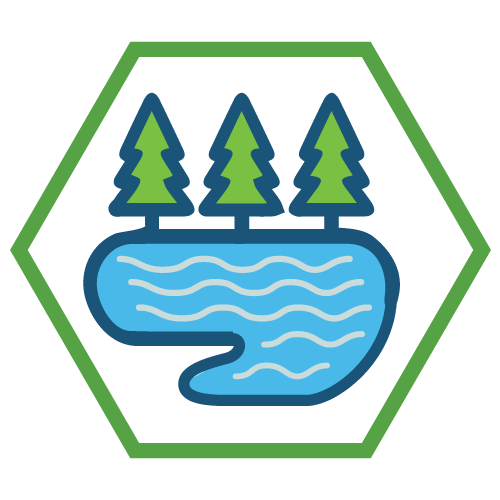 Protecting natural spaces and species
Protecting natural spaces and species
We are working to protect and recover our natural spaces and species and support conservation efforts to preserve Ontario’s rich biodiversity.
Progress since 2018
- Provided more than $12 million in funding through the Species at Risk Stewardship Program to support non-profit organizations, Indigenous communities and other stakeholder groups who are working to help protect and recover species at risk through local projects.
- Introduced legislation to further define the core mandate of conservation authorities. These changes would improve the governance, oversight and accountability of conservation authorities, while respecting taxpayer dollars by giving municipalities more say over the conservation authority services they pay for.
- Worked to provide a world-class parks experience that increases the number of visitors to Ontario Parks and provides important health benefits, while protecting and preserving our province’s cherished natural spaces. To date, we have:
- Launched a Healthy Parks Healthy People consultation about how to ensure the health benefits of nature are fully realized by all Ontarians, which will help Ontario Parks develop more effective programs, policies and partnerships.
- Provided more opportunities for Ontarians to visit provincial parks and enjoy the health benefits of nature through promotional programs, supporting the Healthy Parks Healthy People movement.
- Honoured past and present members of the Canadian Armed Forces by offering free weekday day-use entry to Ontario Parks for veterans and active members of the Canadian Armed Forces.
- Made it more affordable and accessible for Ontarians to enjoy provincial parks by reducing the price of the popular seasonal day-use vehicle permits by up to 36% and increasing the number of day-use vehicle permits that can be borrowed from public libraries, free of charge.
- The Ministry of Natural Resources and Forestry is providing a $420,000 Transfer Payment to Ducks Unlimited Canada to support wetland restoration and management.
- The Ministry of Natural Resources and Forestry released Sustainable Growth: Ontario's Forest Sector Strategy, with a commitment to develop and release a Forest Biomass Action Plan that will also support the Environment Plan’s commitment to promote renewable forest biomass, grow talent for the sector, strengthen partnerships with Indigenous peoples, develop a pathway for increased use of mass timber in building construction, and strengthen our sustainable forest management system.
- Continued funding to the Greenbelt Foundation through a $12 million agreement over three years, to enable the organization to advance projects that preserve, protect and restore the environmental and agricultural integrity of the Greenbelt.
- Invested $6 million to electrify more campsites and revitalize and expand the number of roofed accommodations in Ontario Parks.
- Invested $6 million for Ducks Unlimited Canada to restore and enhance wetlands as part of a $30 million total investment over 5 years.
- Provided online tools to extend the reach of Ontario Parks Discovery Education programs.
- Invested $20 million in Ontario’s land conservation efforts by providing partially matched funding over the next four years to land trusts for the purchase of new privately-owned protected areas, their management and restoration.
- Established a working group to identify opportunities to protect more areas in the province and how public-private partnerships can be used to help support Ontario’s conservation efforts.
- Reinvested money collected from penalties in the Ontario Community Environment Fund to support projects that improve the environment and give people opportunities to experience nature, such as tree planting or increasing naturalized areas for habitat improvement.
- Continued initiatives like Ontario’s Living Legacy, starting with a proposal to designate Ostrander Crown Land Block and Point Petre Provincial Wildlife Area, two ecologically significant areas along the southern shore of Prince Edward County, as conservation reserves.
- Consulted further on a series of regulatory proposals to improve the governance, oversight and accountability of conservation authorities, including:
- further defining mandatory programs and services conservation authorities will be required to provide
- what is required of conservation authorities and municipalities in planning their transition to the new operating and funding model
Next steps
- Invest $100,000 over two years in Earth Rangers, a youth-focused conservation organization dedicated to educating children and their families about biodiversity, protecting animals and their habitats.
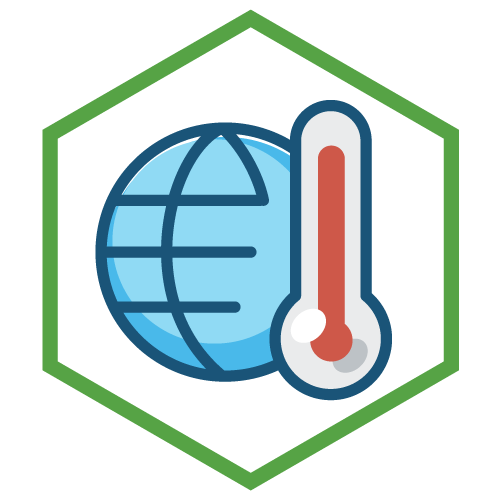 Addressing climate change
Addressing climate change
Ontario is taking meaningful action to lower greenhouse gas emissions and meet our 2030 target, while helping communities prepare for the impacts of climate change.
Progress since 2018
- Finalized and received federal recognition of Ontario’s emissions performance standards to ensure large, industrial emitters are accountable for their greenhouse gas emissions.
- Matched a $295 million investment with the federal government to retool Ford of Canada's Oakville Assembly Complex into a global hub for battery electric vehicle production. This investment ensures our province continues to lead North America and the world in automotive manufacturing and innovation, while boosting our competitiveness in this key sector, creating jobs, and supporting a low-carbon, clean-growth economy.
- Created the Cleaner Transportation Fuels regulation to set requirements that increases requirements for renewable content in gasoline while maintaining requirements for diesel. The new regulation requires fuel suppliers to blend renewable content (such as ethanol) in gasoline to 11% in 2025, 13% in 2028 and 15% in 2030.
- The Province signed “Preliminary Agreements” with the City of Toronto and York Region, in February and May 2020 respectively, to formalize the Ontario-Toronto and Ontario-York Region Transit Partnerships. These historic partnerships will enable the delivery of significant expansion and modernization of public transit, including through the implementation of priority projects identified in Ontario’s New Subway Transit Plan for the Greater Toronto Area (GTA).
- Released a low-carbon hydrogen discussion paper to inform a low-carbon hydrogen strategy that could create jobs and help the province move towards its greenhouse gas reduction target.
- Launched the first-ever broad, multi-sector provincial climate change impact assessment to identify where the province is vulnerable to climate change. Following a competitive procurement process, Ontario selected a consulting team led by the Climate Risk Institute to conduct the assessment.
- Issued $4.95 billion in green bonds to help finance public transit initiatives, extreme-weather resistant infrastructure, and energy efficiency and conservation projects
- Established an advisory panel on climate change to provide the minister with expert advice on the implementation of the province’s climate change actions, especially on how Ontario can prepare for the costs and impacts of climate change.
- Updated the Provincial Policy Statement to include changes to enhance direction for planning authorities to prepare for the impacts of a changing climate. It also includes enhanced stormwater management policies to protect water and support climate resilience.
- Launched a $1-million “Build Back Better” pilot project, through which the province provided municipalities that qualified for Municipal Disaster Recovery Assistance funding up to 15% above the estimated cost of rebuilding damaged public infrastructure to make it more resilient to extreme weather.
- Named a special advisor on flooding and launched extensive public consultation on the province’s existing flood mitigation and land use planning policies. The special advisor submitted his report in 2019 and outlined ways that all levels of government, and individuals, can make Ontario more resilient to flooding. Building on the Special Advisor’s report, the Ministry of Natural Resources and Forestry released Protecting People and Property: Ontario’s Flooding Strategy in March 2020. The Strategy outlines steps the Ontario government will take with its partners over the coming years to reduce flood risk and help Ontarians better prepare for flooding events through a series of new and enhanced actions.
Next steps
- Work with the federal government to ensure a smooth transition for industry to Ontario’s emissions performance standards program.
- Finish the phase out of coal by supporting efforts of Ontario industry to reduce their greenhouse gas emissions by reducing and phasing out their use of coal.
- Provide young Ontarians with more opportunities to share their insights and ideas on addressing climate change, by establishing a youth climate advisory group.
- Develop Ontario’s first-ever low-carbon hydrogen strategy that would create jobs, support economic recovery and help the province move towards its greenhouse gas reduction target.
- Continue to look at ways we can support the clean technology sector as part of our broader economic growth and recovery efforts.
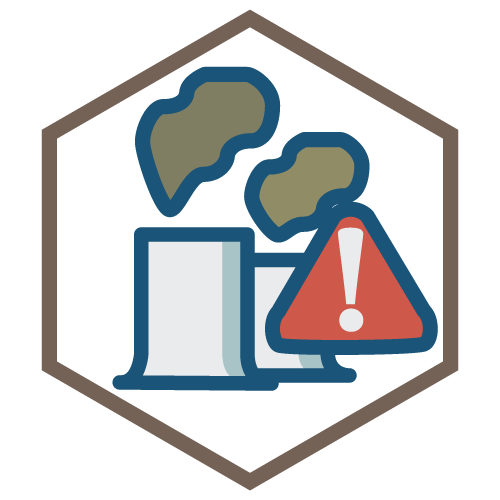 Holding polluters accountable
Holding polluters accountable
Ontario is strengthening enforcement tools to hold polluters accountable and ensure compliance with environmental laws to protect and preserve our air, land and water as committed to in the Made in Ontario Environment Plan
Progress since 2018
We passed legislation that expands the use of administrative monetary penalties and will create a more efficient, effective, and fair enforcement framework for our environmental laws and better cover the ministry’s entire compliance community.
We created a modernized and accessible online reporting tool for Ontarians to report and track instances of pollution in the province. This online reporting tool will keep polluters accountable, while helping minimize and contain pollution events that threaten our health and environment.
Next steps
- Consult on a number of initiatives to help deter pollution and bring polluters into compliance with environmental laws:
- Modernize our compliance policy to be more efficient and responsive, allowing us to focus on incidents that pose the greatest risk to the environment and human health.
- Change Ontario’s land use guidelines to improve land use planning decisions and prevent new residences or other incompatible land uses from being approved near certain types of businesses or sites that may create noise or odours.
- Introduce a new guideline with technical direction for industrial facilities that produce odorous emissions and require environmental compliance approvals from the province to help facilities proactively identify and manage odour sources.
- Implement the new administrative monetary penalties framework to inform the development of draft regulations and supporting guidance.
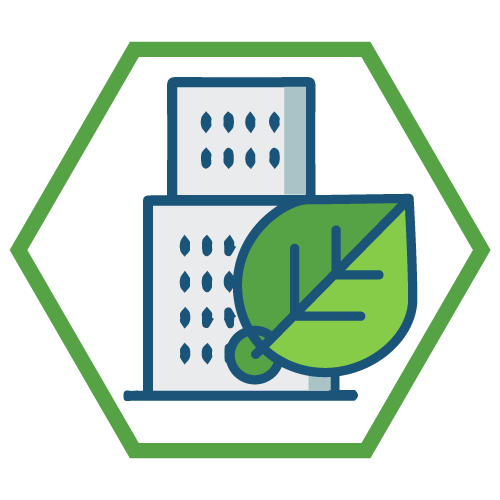 Supporting infrastructure development while ensuring environmental protection
Supporting infrastructure development while ensuring environmental protection
Ontario is getting construction projects built faster by modernizing review processes and reducing red tape, while ensuring that strong environmental oversight is maintained.
Progress since 2018
- Released a discussion paper to hear views on how to bring Ontario’s environmental assessment program into the 21st century.
- Made changes to the Environmental Assessment Act and began consultation on implementing regulatory and policy changes that would, if approved, improve the environmental assessment process by cutting the average review time in half for the largest projects and matching level of study required with the potential environmental impact of a project.
- Made changes to the Environmental Assessment Act to give local municipalities more say in landfill approvals by requiring new, large landfill applicants to ensure there is local support from host municipalities, and certain neighbouring municipalities.
- Took steps to make it safer and easier to use local excess soil and put vacant, prime lands back into good use while maintaining strong environmental protections to stop illegal dumping of contaminated soil.
- Posted a proposal on the Environmental Registry with a view to updating the ministry’s Statement of Environmental Values for the first time in over a decade, to reflect the expanded mandate of the ministry, which now includes parks and conservation reserves, conservation authorities, as well as species at risk.
- Began the transition to the Consolidated Linear Infrastructure Permissions Approach for low risk projects related to sewage collection and stormwater management, with a goal of getting important, low-risk public infrastructure projects built sooner by reducing the time it takes between when needs are identified and when citizens can actually benefit.
- Streamlined permissions for certain low impact combined heat and power technologies that use natural gas or wood biomass as fuel, so more communities and businesses can benefit from cheaper and more energy-efficient technologies that can also provide more reliable power in emergency situations.
- Streamlined permissions for certain low-risk, short-term water taking activities, such as pumping tests, construction site dewatering, highway and transit projects, and exempted low-impact water taking activities, such as diversions from requiring a Permit to Take Water, so businesses, developers and municipalities can begin construction and infrastructure projects sooner.
Next steps
- Review comments on a proposed list of projects that will be subject to the comprehensive environmental assessment requirements in the revised Environmental Assessment Act, before consulting on the regulation itself. This project list is a key component of the transformational change required to modernize the environmental assessment program.
- Consult on a list of proposed projects and the regulation that sets out the types of projects that would be subject to the streamlined environmental assessment provisions of the amended Environmental Assessment Act, beginning first with municipal infrastructure.
- Continue transforming environmental permissions to make government-to-business transactions faster, while protecting human health and the natural environment. Continue consulting on expanding businesses able to self-register on the Environmental Activity and Sector Registry and developing additional exemptions for lower risk activities. The changes will ensure that the level of ministry oversight is proportionate to the level of impact of activities.
 Broader government achievements
Broader government achievements
Ontario continues to work alongside its agencies, boards, commissions and panels, to protect the environment and address climate change.
Progress since 2018
In addition to fulfilling their ongoing mandates and directives, our partners have made the following progress:
- Ontario Power Generation released a climate change plan to drive efficient, economy-wide decarbonization and economic renewal, while protecting the environment. Key actions of the plan include advancing electrification initiatives in the province and exploring opportunities in renewables, energy storage, and Small Modular Reactors (SMR) among other actions.
- Enbridge Gas launched a new voluntary renewable natural gas program, which allows customers to contribute $2 a month as a cost-effective option to help offset the increased costs to acquire carbon-neutral renewable natural gas.
- The Ontario Energy Board approved an application by Enbridge Gas for a project in Markham, Ontario to pilot the blending of renewable hydrogen gas into the existing natural gas network, reducing greenhouse gas emissions.
- The Ontario Energy Board announced the commission of a distributed energy resources impact study to forecast adoption of distributed generation and storage in Ontario. This study supports the Environment Plan commitments of ensuring the Ontario Energy Board keeps pace with consumer demands, adopts innovative energy solutions (like renewable natural gas) and modernizes the energy grid.
- The Ministry of the Environment, Conservation and Parks will continue to contribute to and participate in environmental groups in Canada and abroad, such as The Green Ribbon Panel, a collection of environmental and economic leaders from across Canada. The recent Green Ribbon Panel Report highlights many opportunities, including leveraging Ontario’s unique clean energy technologies and existing assets to reduce GHG emissions and lower energy costs, pursuing electrification of the economy supplemented by the application of hydrogen to incrementally and reliably reduce GHG-emissions, and establishing Ontario as a jurisdiction known for its sustainable products.
- Source protection authorities and source protection committees prepared 20 amendments to source protection plans and 19 work plans governing future reviews and updates to these plans to help ensure Ontario’s drinking water sources continue to be protected.
- Source protection authorities provided data mapping the location of over 1,150 municipal drinking water protection zones, which is available to the public through the Source Protection Information Atlas.
Next steps
- Begin delivery of digital services by the Resource Productivity and Recovery Authority to support hazardous waste program stakeholders to report their activities in January 2023, which will help hold polluters accountable for the wastes they generate.
- Continue the work of the advisory panel on climate change to provide advice to the province on implementing its climate change actions, especially how Ontario can prepare for the costs and impacts of climate change. The ministry anticipates it will receive the panel’s final report in fall 2021.
